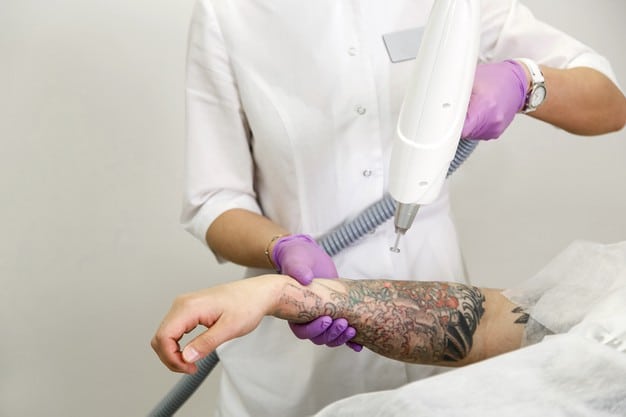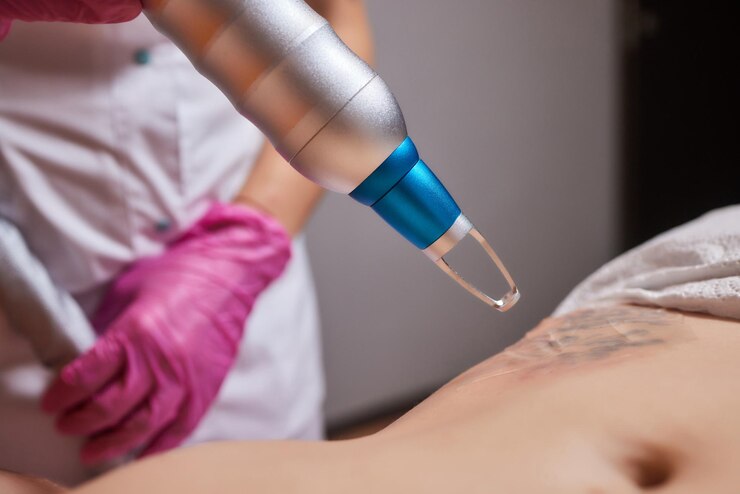Laser tattoo removal is an effective method for erasing unwanted ink, but the process requires careful consideration and preparation. To maximize your results and ensure a smooth experience, follow these ten tips for effective laser tattoo removal.
1. Choose an Experienced Practitioner
Selecting the right practitioner is crucial for the success of your tattoo removal. Look for a certified professional with extensive experience in Laser Tattoo Removal In Dubai. Research reviews, ask for recommendations, and ensure they use up-to-date technology. A knowledgeable practitioner can assess your specific needs and tailor the treatment accordingly.
2. Understand the Process
Before undergoing laser tattoo removal, take the time to educate yourself about the procedure. Understanding how the laser works, what to expect during the sessions, and the potential side effects will help you feel more comfortable and prepared. Your practitioner should provide clear information and answer any questions you may have.

3. Avoid Sun Exposure
Prior to your treatment, minimize sun exposure to the tattooed area. Tanned skin can increase the risk of complications and may require additional sessions for effective removal. Use a broad-spectrum sunscreen with an SPF of 30 or higher on the area if you need to be outside, and consider wearing protective clothing.
4. Follow Pre-Treatment Guidelines
Your practitioner will likely provide pre-treatment instructions to follow. These may include avoiding blood-thinning medications, alcohol, and certain supplements before your appointment. Adhering to these guidelines will help reduce the risk of bruising and improve the effectiveness of the treatment.
5. Be Prepared for Multiple Sessions
Laser tattoo removal is rarely completed in one session. Depending on the size, color, and depth of the tattoo, multiple sessions may be required for complete removal. Be patient and commit to the process; each session will bring you closer to your desired outcome.
6. Manage Pain and Discomfort
During the procedure, some discomfort is to be expected. Discuss pain management options with your practitioner before the treatment. They may offer numbing creams or other methods to help alleviate discomfort. Knowing how to manage pain will make the experience more tolerable.
7. Care for Your Skin Post-Treatment
After each session, proper aftercare is essential for optimal healing. Follow your practitioner’s aftercare instructions carefully. Keep the area clean, avoid excessive sun exposure, and apply any recommended ointments to promote healing and reduce the risk of complications.
8. Monitor for Side Effects
Be vigilant in monitoring the treated area for any unusual reactions. Redness, swelling, and minor blistering are common, but if you notice severe pain, excessive swelling, or signs of infection, contact your practitioner immediately. Early intervention can help prevent complications.
9. Stay Hydrated and Healthy
Maintaining good overall health can enhance the tattoo removal process. Drink plenty of water, eat a balanced diet rich in vitamins and minerals, and get adequate rest. A healthy body supports your skin’s healing process and may improve the effectiveness of the treatment.
10. Consider Emotional Preparedness
Tattoo removal can be an emotional process. Be prepared for the feelings that may arise as you remove a tattoo that once held meaning. Reflect on your reasons for choosing removal and focus on the positive aspects of this decision. It may also be helpful to talk to friends, family, or a professional for support.
Conclusion
Laser tattoo removal can be a transformative experience, allowing individuals to reclaim their skin and move forward in life. By following these tips, you can enhance the effectiveness of the procedure and ensure a smoother journey toward achieving your tattoo removal goals. Always consult with your practitioner for personalized advice and support throughout the process.





Comments